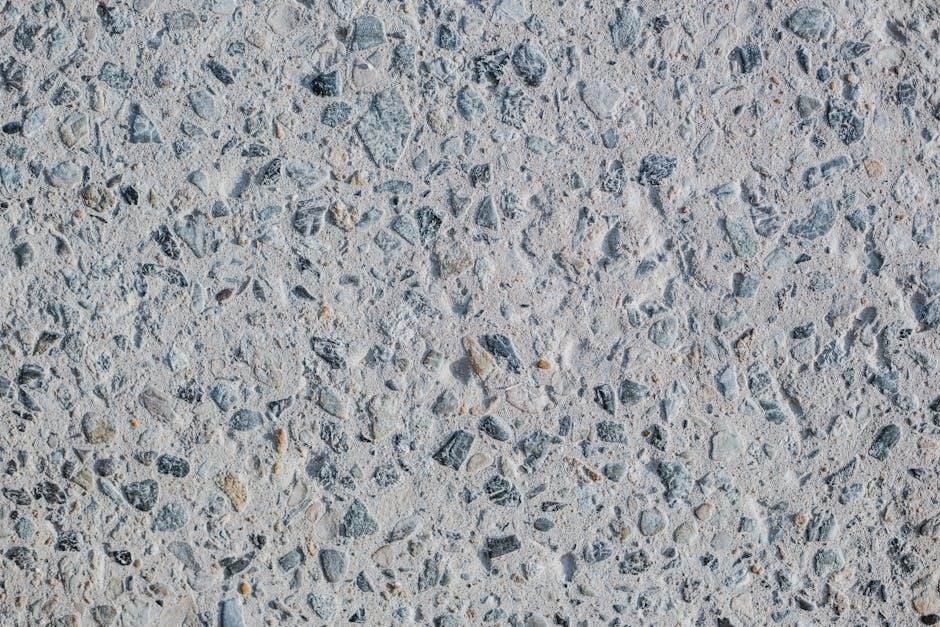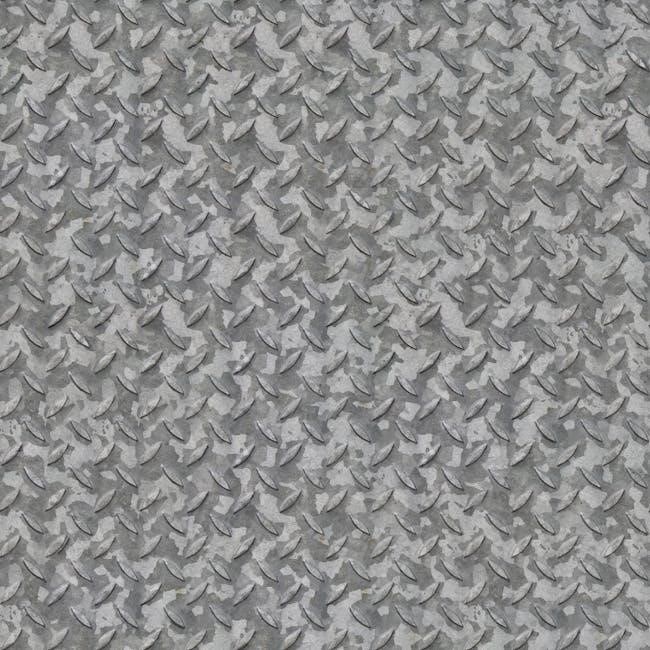Strength of Materials, or Mechanics of Solids, studies how external forces affect solid objects. It explores stress, strain, and deformation, crucial for engineering design and material selection. PDF resources like lecture notes and textbooks provide comprehensive insights into key concepts, ensuring a solid foundation for understanding material behavior under various loads.
1.1 Definition and Importance
Strength of Materials is the study of how solid objects deform and fail under external forces. It defines stress, strain, and elasticity, crucial for understanding material behavior. This field is vital in engineering, ensuring structures are safe, durable, and efficient. By analyzing stress-strain relationships, engineers predict material failure, enabling optimal design and material selection for various applications, from buildings to machinery.
1.2 Scope and Applications in Engineering
Strength of Materials is fundamental in engineering, enabling the design of structures, machines, and mechanisms. It applies to analyzing beams, columns, and shafts under various loads. Engineers use it to ensure safety, efficiency, and durability in constructions, bridges, and mechanical systems. Understanding material behavior under stress and strain aids in preventing failures and optimizing material selection for diverse applications, from aerospace to civil engineering.

Key Concepts in Strength of Materials
Stress, strain, and Hooke’s Law form the core of strength of materials. Understanding elastic limits and types of loads (tensile, compressive, shear) is essential for material analysis and design.
2.1 Stress and Strain
Stress is the internal resistance of a material to external forces, measured as force per unit area; Strain represents the resulting deformation, quantifying the change in shape or size. Understanding stress-strain relationships is fundamental for analyzing material behavior under various loads. Elastic materials return to their original shape after stress is removed, while plastic materials exhibit permanent deformation. Accurate stress-strain analysis ensures safe and efficient engineering designs.
2.2 Hooke’s Law and Elastic Limit
Hooke’s Law states that stress is proportional to strain within the elastic limit, where materials return to their original shape after loading. The elastic limit is the maximum stress a material can endure without permanent deformation. Beyond this point, plastic deformation occurs. Understanding these concepts is crucial for predicting material behavior under various loads and ensuring structural integrity in engineering applications.
2.3 Types of Loads: Tensile, Compressive, and Shear
Tensile loads stretch materials, compressive loads squeeze them, and shear loads cause sliding deformation. Understanding these load types is essential for analyzing material behavior under stress. Tensile and compressive loads act along the axis of the material, while shear loads act parallel to the surface. Each type of load affects material integrity differently, influencing design considerations and failure prevention in engineering applications.
Stress and Strain Analysis
Stress and strain analysis evaluates material deformation under external forces. It involves calculating principal stresses, interpreting stress-strain diagrams, and understanding material behavior to prevent failure in engineering applications.
3.1 Principal Stress and Strain
Principal stress and strain represent the maximum and minimum values of stress and strain acting on a material at a given point. These values are critical in analyzing material failure, as they determine the overall deformation and potential fracture points. Resources like PDF notes and textbooks detail methods to calculate principal stresses, ensuring accurate predictions of material behavior under complex loading conditions.
3.2 Stress-Strain Diagrams and Their Interpretation
Stress-strain diagrams illustrate the relationship between stress and strain, providing insights into material behavior under load. These diagrams help identify key properties such as elastic modulus, yield strength, ultimate tensile strength, and fracture points. PDF resources and textbooks offer detailed interpretations, enabling engineers to analyze material ductility, brittleness, and failure modes. Accurate interpretation is vital for designing safe and reliable structures.

Elasticity and Plasticity of Materials
Elasticity refers to a material’s ability to return to its original shape after stress is removed, while plasticity is its capacity to undergo permanent deformation. Understanding these properties is essential for material selection and design, as they determine how materials behave under various loads and stresses.
4.1 Elastic Modulus and Its Significance
Elastic modulus measures a material’s stiffness, quantifying its resistance to elastic deformation. It is defined as the ratio of stress to strain within the proportional limit. Types include Young’s modulus, shear modulus, and bulk modulus. Hooke’s Law mathematically represents this relationship. A higher modulus indicates greater rigidity, crucial for engineering applications in predicting material behavior under load, ensuring structural integrity, and optimizing material selection for desired performance.
4.2 Plastic Deformation and Yield Point
Plastic deformation occurs beyond the elastic limit, where materials undergo permanent shape change. The yield point marks the transition from elastic to plastic behavior. Brittle materials fracture near this point, while ductile materials exhibit significant deformation. Understanding plastic deformation and yield strength is vital for material selection, ensuring structural safety, and predicting failure modes under various loading conditions in engineering applications.
Types of Materials
Materials are classified as isotropic, anisotropic, or orthotropic based on their directional properties. Homogeneous materials have uniform properties, while heterogeneous materials vary in composition, affecting strength and durability.
5.1 Isotropic, Anisotropic, and Orthotropic Materials
Isotropic materials have identical properties in all directions, simplifying analysis. Anisotropic materials exhibit direction-dependent properties, common in composites. Orthotropic materials, like wood, have three orthogonal axes with distinct properties. Understanding these classifications is crucial for accurately predicting material behavior under various loads and stresses, ensuring optimal engineering design and material selection.
5.2 Homogeneous and Heterogeneous Materials
Homogeneous materials have uniform properties throughout, while heterogeneous materials exhibit varying properties across different regions. Homogeneous materials, like metals, simplify analysis due to consistent behavior. Heterogeneous materials, such as composites or concrete, require more complex analysis as their properties differ in various sections. Understanding these classifications aids in predicting material behavior, ensuring accurate engineering designs and reliable material performance under diverse conditions.
Fracture Mechanics and Failure Analysis
Fracture mechanics examines material failure due to cracks and stress concentrations. It analyzes crack propagation and failure modes, enabling engineers to predict and prevent structural failures.
6.1 Causes of Material Failure
Material failure occurs due to stress concentrations, fatigue, or defects. External forces, improper design, or material imperfections can lead to crack initiation and propagation. Engineers analyze these factors to prevent failure, ensuring structural integrity and safety in engineering applications.
6.2 Fatigue Failure and Its Prevention
Fatigue failure results from repeated loading and cyclic stresses, causing progressive damage over time. It often occurs in components subjected to fluctuating forces, leading to crack initiation and propagation. Prevention strategies include improving design to minimize stress concentrations, selecting materials with higher endurance limits, and implementing regular inspections to detect early signs of fatigue. These measures enhance the reliability and longevity of engineering structures.
Beams and Bending
Beams are structural members subjected to bending loads, causing deformation and internal stresses. Understanding shear force and bending moment diagrams is essential for analyzing beam behavior under various loads.
7.1 Shear Force and Bending Moment Diagrams
Shear force diagrams illustrate the variation of shear force along a beam’s length, while bending moment diagrams show bending moment distribution. These diagrams are crucial for analyzing beam behavior under various loads, helping engineers identify maximum shear force and bending moment, ensuring the beam’s safety and functionality. They are derived from free-body diagrams and reactions at supports, varying with beam types and load configurations.
7.2 Stresses in Beams and Beam Analysis
Beams are structural members designed to withstand external loads, primarily bending and shear. The analysis involves calculating normal and shear stresses using formulas like the flexure formula, which relates stress to bending moment and section modulus. Maximum stress occurs at the extreme fibers, while the neutral axis experiences no stress. Beam analysis ensures the material’s strength exceeds induced stresses, preventing failure and ensuring structural integrity and safety under various load conditions.

Torsion in Circular Shafts
Torsion in circular shafts involves twisting forces, inducing shear stress. The shear stress (τ) is given by τ = Tc/J, where T is torque, c is radius, and J is polar moment of inertia. Design ensures materials withstand maximum shear stress without failure, critical for power transmission components like axles and drive shafts.
8.1 Torsional Deformation and Shear Stress
Torsional deformation occurs when a circular shaft is subjected to twisting forces, inducing shear stress. The shear stress (τ) is given by τ = Tr/J, where T is torque, r is radius, and J is the polar moment of inertia. Maximum shear stress occurs at the surface. Understanding torsional deformation and shear stress is essential for designing shafts and power transmission components to avoid failure.
8.2 Design Considerations for Shafts
Shaft design involves ensuring strength and durability under torsional and bending loads. Key factors include material selection, diameter calculation, and surface finish. Fatigue failure prevention is critical, with stress concentration areas like keyways and shoulders minimized. Proper lubrication and alignment also enhance performance. Design guidelines often reference textbooks and lecture notes, providing formulas and best practices for optimal shaft design in mechanical systems.

Material Selection for Engineering Applications
Material selection involves evaluating properties like strength, durability, and cost. Factors such as load conditions, environmental impact, and manufacturability guide choices, supported by resources like textbooks and case studies.
9.1 Factors Influencing Material Selection
Material selection is influenced by mechanical properties, cost, durability, and environmental factors. Strength, stiffness, and resistance to stress or corrosion are critical. Economic considerations, manufacturability, and sustainability also play roles. Resources like textbooks and case studies provide insights into balancing these factors for optimal engineering solutions.
9.2 Case Studies in Material Selection
Case studies highlight real-world applications of material selection, showcasing how specific materials perform under various conditions. For instance, crankshaft design utilizes strong, durable materials to withstand torsional stress. Bolt and nut selections often prioritize strength and resistance to shear forces. These studies provide practical insights into balancing material properties, cost, and performance, aiding engineers in making informed decisions for optimal design and functionality.
Advanced Topics in Strength of Materials
Advanced topics explore numerical methods and modern materials, enhancing analysis with computational tools and innovative applications for optimal performance and durability.
10.1 Numerical Methods in Material Analysis
Numerical methods, such as finite element analysis, are widely used in material analysis to predict behavior under various loads. These computational tools enable precise modeling of stress, strain, and deformation, enhancing design accuracy. They are particularly useful for complex geometries and nonlinear material responses. By simulating real-world conditions, engineers optimize material performance and reduce prototyping costs, making them indispensable in modern engineering practices.
10.2 Modern Materials and Their Strength Properties
Modern materials, such as advanced composites, smart materials, and nanomaterials, exhibit exceptional strength properties. These materials are engineered for high performance, offering enhanced durability, resistance to fatigue, and corrosion. Their unique molecular structures enable lightweight yet robust applications in aerospace, energy, and biomedical fields. Research and development focus on optimizing these materials for adaptability and multifunctionality, ensuring they meet the demands of cutting-edge technologies and sustainable practices.
The study of strength of materials provides fundamental insights into stress, strain, and deformation. Understanding these concepts is crucial for material selection and engineering applications.
11.1 Summary of Key Concepts
Strength of materials involves understanding stress, strain, and deformation under external forces. Key concepts include elasticity, plasticity, and failure mechanisms. Stress-strain diagrams illustrate material behavior, while fracture mechanics explains failure modes. Beams and torsion analysis are vital for engineering applications, ensuring structural integrity. These principles guide material selection and design, emphasizing safety and efficiency in construction and manufacturing.
11.2 Future Trends in Material Science
Future trends in material science focus on developing advanced composites, smart materials, and sustainable options. Researchers emphasize eco-friendly materials, nanotechnology, and additive manufacturing. Energy-efficient materials for renewable applications are gaining prominence. AI-driven material discovery is accelerating innovation, enabling tailored properties for specific applications. These advancements promise to revolutionize industries, enhancing performance, durability, and environmental compatibility, while addressing global challenges in construction, energy, and transportation.
Additional Resources
Access lecture notes, PDFs, and textbooks like “Strength of Materials” by Singer and Pytel. Online platforms such as Esenotes.com offer comprehensive study materials for civil engineering.
12.1 Recommended Textbooks and Lecture Notes
Key textbooks include “Strength of Materials” by Ferdinand L. Singer and “Mechanics of Materials” by Ferdinand P. Beer. Lecture notes from institutions like Anna University and professors such as Dr. Ayad A. Sulaibi provide detailed insights. These resources cover essential topics like stress-strain relationships, material failure, and design principles, offering both theoretical and practical knowledge for comprehensive understanding.
12.2 Online Platforms for Study Materials
Popular platforms like Esenotes.com offer comprehensive PDF study materials for strength of materials. They provide lecture notes, question banks, and case studies, covering topics like stress-strain relationships and material failure. Websites such as Anna University and Prof. Dr. Ayad A. Sulaibi’s resources are highly recommended for detailed insights into strength of materials, making them invaluable for both students and professionals.



